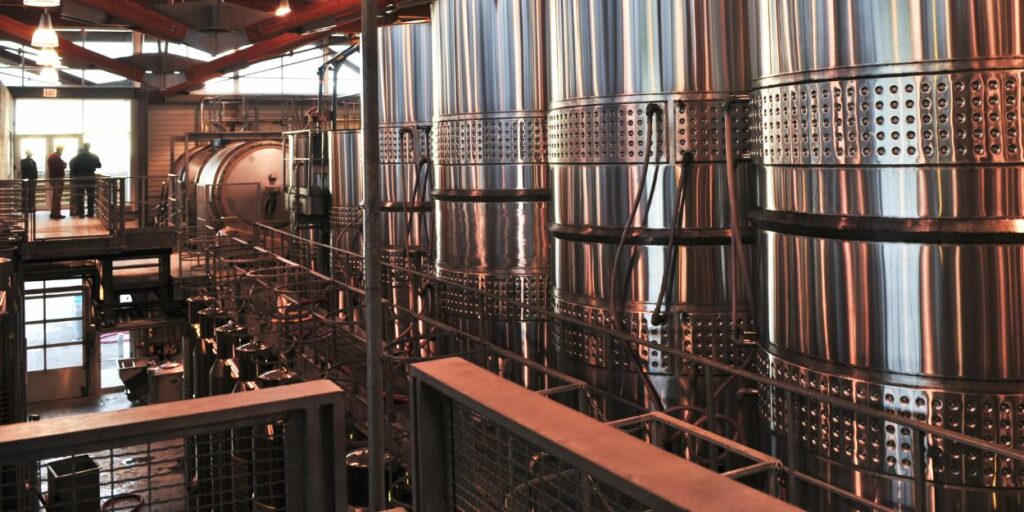
Conditioning & Mixing Tank Agitators – Mining & Mineral Processing
In the dynamic realm of mining and mineral processing, the


What is Fermentation?
Fermentation is a chemical process that occurs in the absence of oxygen and involves the conversion of organic compounds into simpler compounds, typically with the production of energy. It is an ancient technique used by humans for thousands of years to preserve food, create alcoholic beverages, and even produce certain chemicals and pharmaceuticals.
Here are some important terms used in fermentation, along with their definitions,
Types of Fermentation:

Detailed explanation of various aspects in fermentation:
Anaerobic Process: Fermentation is an anaerobic process, meaning it occurs in the absence of oxygen. Unlike cellular respiration, which requires oxygen, fermentation is a way for cells to generate energy when oxygen is limited or unavailable. The electron transport chain cannot function effectively due to the absence of oxygen. Without final electron acceptor like oxygen, the NADH produced during glycolysis cannot transfer its electrons to generate ATP through oxidative phosphorylation.
Glycolysis: The initial step in most fermentation processes is glycolysis. Glycolysis is a metabolic pathway that breaks down glucose (a sugar molecule) into smaller compounds, such as pyruvate, with the net production of a small amount of energy in the form of ATP (Adenosine Triphosphate) and NADH.
Industrial Applications: Fermentation has various industrial applications beyond food and beverages. It is used in the production of antibiotics, enzymes, organic acids, biofuels (such as ethanol), and other valuable products. For example, penicillin, a widely used antibiotic, is produced through the fermentation of Penicillium molds.
Food Preservation: In addition to producing alcoholic beverages, fermentation is an excellent method for preserving foods. The acidic and alcoholic environments created during fermentation help inhibit the growth of helpful microorganisms and extend the shelf life of the food.
Health Benefits: Some fermented foods, like yogurt, sauerkraut, and kimchi, contain probiotics, which are beneficial bacteria that support gut health. Consuming these foods can improve digestion and overall gut health.
Biogas Production: Fermentation is a key process in biogas production, where organic materials like agricultural waste, food scraps, and sewage are anaerobically fermented to produce biogas, mainly methane. Biogas is an environmentally friendly energy source used for heating, electricity generation, and cooking.
Explore Our Extensive Range of Fermentation Equipment at Dynamix Agitators – Discover Your Ideal Solution in Our Catalog
Mixers in Fermentation:
Agitator mixers are mixing devices used to create turbulence and promote mixing within the fermentation vessel. They typically consist of impellers that rotate or move through the fermentation medium, ensuring proper contact between the microorganisms and nutrients. Agitators are commonly used in large-scale industrial fermentation processes.
Mixers play a vital and indispensable role in biological fermentation tanks. They are carefully chosen for their specific functions in ensuring efficient gas-liquid dispersion, solid-liquid suspension, mixing, and heat transfer throughout the tank. By meeting these requirements, they contribute to enhancing fermentation output and minimizing energy consumption. Dynamix Agitators produces top-notch fermentation industrial agitator mixers that find widespread application in various biological fermentation processes such as starch sugar, polyol, yeast, amino acid, lactic acid, and more.
Conclusion: Fermentation is a fascinating and versatile process that has played a vital role in human civilization for centuries. Its various applications in food, beverages, medicine, and energy make it an essential field study in biotechnology and biochemistry.

In the dynamic realm of mining and mineral processing, the

Mining operations are essential for meeting the world’s resource needs, yet they

Water treatment is a complex yet vital process that ensures
Subscribe to our newsletter for helpful technical publications and industry announcements.

This website uses cookies to ensure you get the best experience on our website